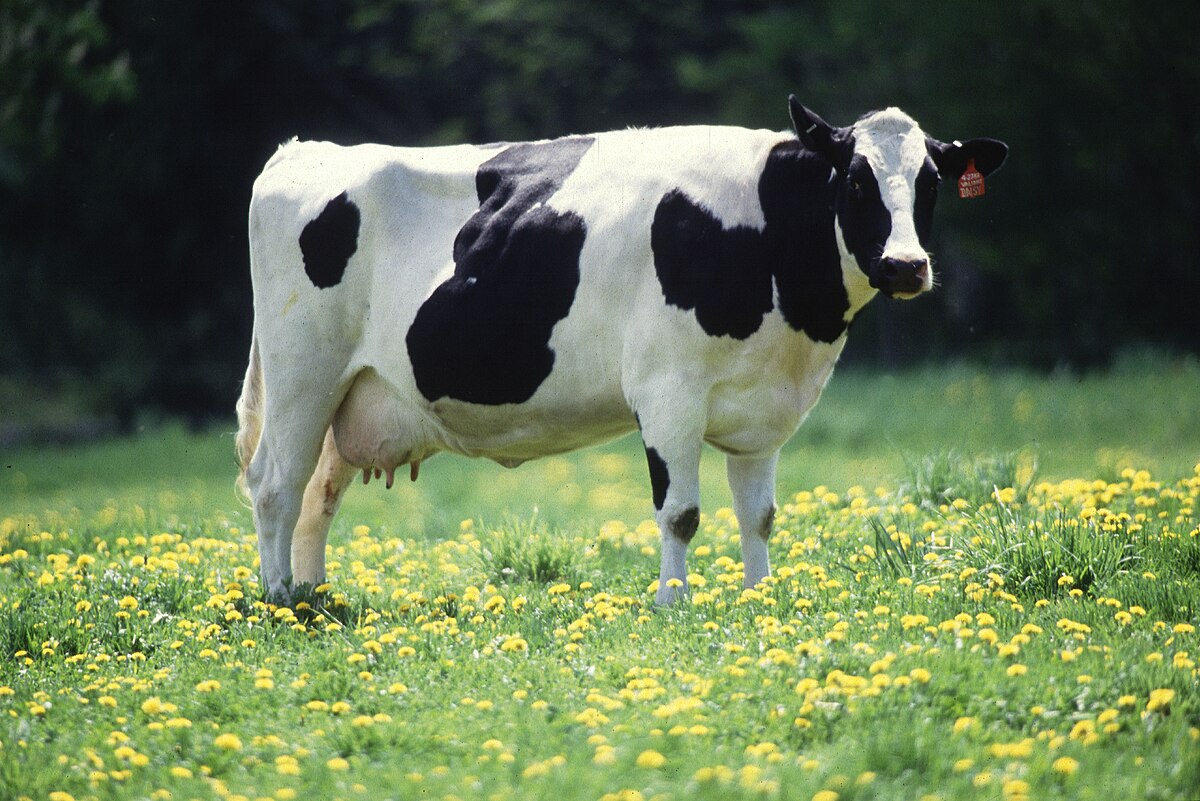By: Sergio Barragan
 |
| Holstein cow, commonly used for dairy production. Figure taken from https://en.wikipedia.org/wiki/Dairy_cattle |
Ruminants are herbivorous mammals with a specialized organ (the rumen) that houses useful digestive gut microbes. These microbes have been linked to an animals' feed efficiency, or how much energy is retrieved from the food consumed. Not all animals have the same level of efficiency; Sheerli and her colleagues were interested in whether any differences in the gut microbiome could affect this. The scientists measured feed efficiency in 146 dairy cows by observing their food intake, excrement content, milk production, and weight gain over a 49-day period. Gut microbes were genetically identified, and the diversity and metabolic activity were observed. Their studies showed that cows with a lower richness, or diversity, of microbe species are more efficient in their energy uptake. This was likely due to the more specialized nature of a few dominant species and a simpler metabolite network between them compared to the more diverse microbiome in low efficiency cows. Sheerli and her team also found that higher efficiency cows produced less methane (a prevalent greenhouse gas).
These results could alleviate some pressing questions that society faces. How can we use this knowledge to maximize food production while also minimizing the use of land and crops for livestock consumption? Will higher efficiency cows curve our impact on climate change?
Citation: Shabat SKB, Sasson G, Doron-Feigenboim A, Durman T, Yaacoby S, Miller MEB, White BA, Shterzer N, and Mizrahi I. (2016). Specific microbiome-dependent mechanisms underlie the energy harvest efficiency of ruminants.
ISME Journal, 10:2958-2972. doi:10.1093/femsec/fix060

No comments:
Post a Comment